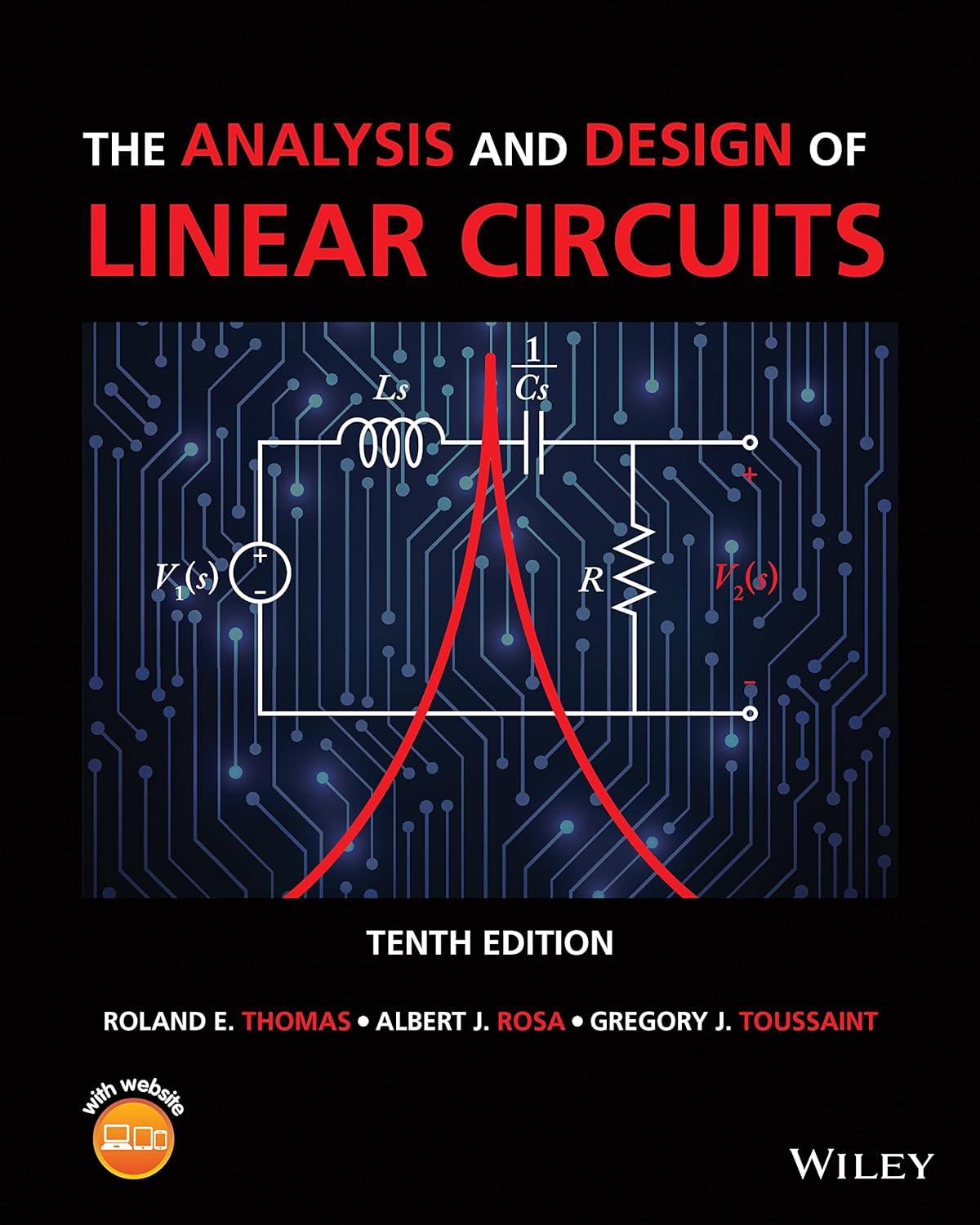Multisim has a useful Fourier analysis option. In this problem, you are to use this option to
Question:
Multisim has a useful Fourier analysis option. In this problem, you are to use this option to estimate the average power delivered to a 1 - \(\Omega\) resistor by the fundamental and the next two nonzero harmonics of a triangular wave. First construct two circuits, one using the triangular wave provided by Multisim. The wave should have \(\pm 1 \mathrm{~V}\) amplitude and a period of \(1 \mathrm{~ms}\), you will need to add an appropriate offset. Compute the Fourier coefficients for the triangular wave described. The second circuit is constructed using three ac sources, each at the appropriate Fourier frequency and amplitude connected in series. Note that Multisim uses sines rather than cosine so that a \(-90^{\circ}\) phase shift must be added to each source. Each circuit should be connected to a series 1 - \(\Omega\) resistor. Run a transient response of the voltage across each resistor to ensure both signals fall atop each other. Next select the Multisim "Fourier" analysis option. Select the voltage across the resistor and run the option using only the triangular source. Grapher View displays the fundamental and the first 8 harmonics making up the triangular source both as a plot and as a table. Make note of the amplitudes of each nonzero component. Next, selecting the power delivered to the resistor output shows the total power the source delivers under the "DC component" entry on the table. Then repeat the problem using the three-source circuit. Selecting the voltage across the resistor shows the fundamental and the next two nonzero harmonics. Compare these values with the corresponding ones in the triangular wave. Selecting the power delivered to the resistor will show the amount of power delivered by the three components together. To determine the contribution by each component, start by connecting only the fundamental source. Measure the DC component from the table and determine what percentage of the total power (from the triangular source) it provides. Add the next nonzero harmonic and determine what percentage the two together provide. Finally, add the third source and repeat the problem. Comment on how much each additional harmonic contributes to the total power delivered by the triangular source.
Step by Step Answer:

The Analysis And Design Of Linear Circuits
ISBN: 9781119913023
10th Edition
Authors: Roland E. Thomas, Albert J. Rosa, Gregory J. Toussaint





